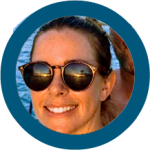TIP: FURBALL CREW BOOTIES
FURBALL CREW BOOTIES

SV MAISON DE SANTE has four legged crew that need to stretch their land legs on the daily. They have just sailed to Cartegena, Columbia wherer there are very limitted green spaces. This means that walks are often on concrete or other hard manmade HOT surfaces.
Nicole says, "For traveling with pets to Colombia: we brought shoes/protection for our pet."
SY MAISON DE SANTÉ 🇺🇸 Nicole & Keenan - Cal 46'


LET THE SEASON BEGIN
LET THE SEASON BEGIN
Hurricane season is officially over in the Atlantic and people are getting underway and moving

After quite a bit preparation Kosmos, 2006 Nordhavn 43, with crew Christi, Eric, and Keith underway from San Diego to Marina Coral in Ensenada. Planning to get to Panama in a month or so. Our next journey begins! Tracker on.
Keith simple sentiment is he is “excited”. I am reflective how special and rare it is to pull off living on a cruising boat, it offers such a wider range of emotions than land life. I am also ready to use the various upgrades to Kosmos to hopefully keep us safe and comfortable.

SY KOSMOS 🇺🇸 Eric, Christi, & Keith - Nordhavn 43'




